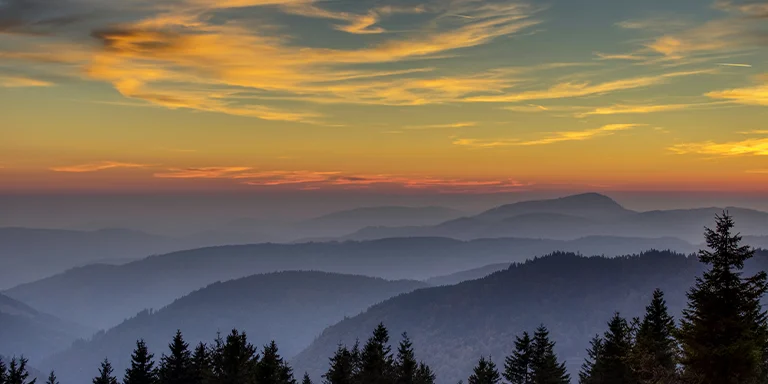
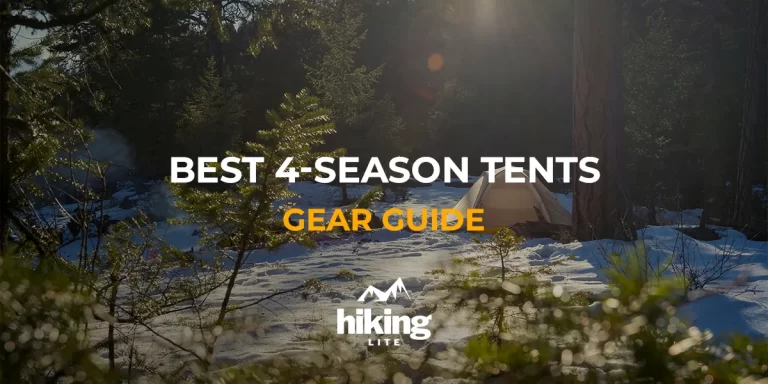
Planning a winter backpacking trip takes work. Choosing the perfect 4-season tent really matters. A good shelter makes or ruins your nature experience.
For all backpackers, having a lightweight tent is crucial. Ultralight or lightweight tents work great. But with so many options, it’s easy to pick one that won’t suit you.
This guide can help! We list the five best 2-person 4-season tents.
You may wonder, why 2-person not 1? When traveling with more gear and potentially stuck in your tent for days, more space makes sense.
We’ll look at packed size, weather protection, indoor space, and ease of setup. Comparing tent features will help you choose the right one for your needs.
Let’s get started.
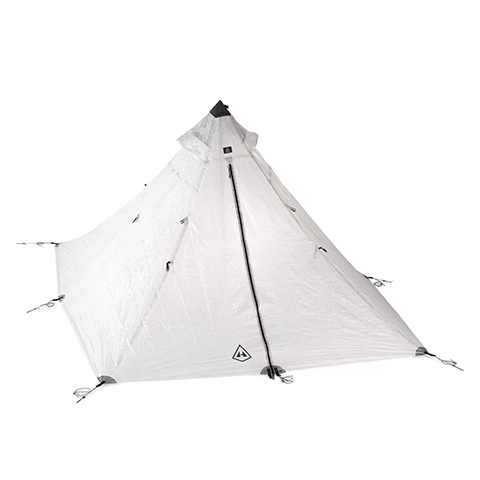
Key Specs
Weight: 1lb 3.1 ounces (541g)
Material: DCF
Price: $$
PROS
✅ Ultralight
✅ Spacious
CONS
❌ Noisy in rain
The Hyperlite UltaMid 2 tent is designed for comfort and protection during all seasons. Its pyramid shape allows easy setup and maximizes interior space for two people.
Despite weighing only 1.3 pounds, the tent is sturdy thanks to its waterproof Dyneema Composite Fabric.
The UltaMid 2 provides 9′ x 7′ of interior space, allowing more headroom when gear is stored at the foot end. Two people plus gear have ample room inside for dining. The kit feels virtually weightless to carry.
However, it’s important to note that this configuration requires purchasing the inner tent separately. Without the inner, there would be no floor. Purchasing the inner tent doubles both the weight and the cost of the setup.
My only issue was noise during heavy downpours, as the material is louder than nylon when rain hits it heavily.
Overall though, this is a very lightweight shelter suitable for multi-season backcountry use. Just be aware of the inner tent requirement and potential rain noise.
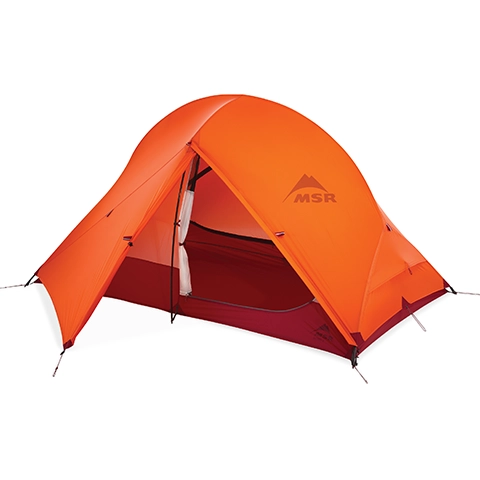
Key Specs
Weight: 3lb 13.8 ounces (1754 grams)
Material: 20D nylon
Price: $$
PROS
✅ Spacious
✅ Durable
CONS
❌ Not the smallest pack size
As avid winter backpackers, we were looking for a 2-person tent that struck the right balance of lightweight, durability and warmth. The MSR Access 2 fit the bill.
Its limited mesh construction provides valuable warmth without sacrificing ventilation. On chilly nights, we stayed cozy inside.
The spacious interior allows room for our gear as well as changing layers comfortably. And the robust frame has held up well against overnight snow loads so far.
Housing two people along with our gear, the Access 2 fits our needs perfectly. Setup is quick thanks to the unified pole configuration.
At its price point, it’s certainly an investment but we’ve been very satisfied with its performance. Several nice design touches like the handy gear loops have been appreciated.
Our one gripe is the jointed poles can be cumbersome to pack down small. Some redesign there could help.
Overall though, the Access 2 continues to serve as a reliable four-season shelter for our winter camping adventures. Its quality and functionality have more than justified the price tag.
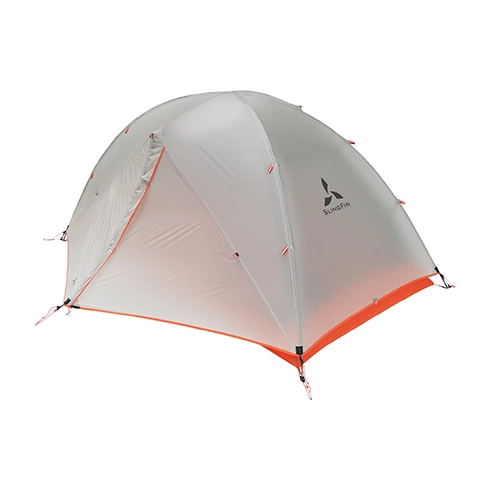
Key Specs
Weight: 2lb 13.8 ounces (1300 grams)
Material: 15D nylon
Price: $$
PROS
✅ Good space
✅ High quality
CONS
❌ Not the easiest to set up
The Portal 2 from Slingfin shows that a lightweight shelter doesn’t have to sacrifice strength or quality. As a 3.5 season tent well-suited for backpacking, it strikes a great balance.
Inspired by Slingfin’s expedition tents, smart design features like extra zippers and materials make this a durable choice to last. Pitching flexibly with poles or a trekking pole is a bonus.
At just around 3 pounds for two people, the Portal 2 is very lightweight. Features like dual doors, extended guylines and ample storage pockets enhance livability.
Setup may take some practice but overall the tent is easy to work with. In harsh weather, the strong construction and versatile pitching held up well.
While the vestibule toggles could use reinforcement, other aspects like ample guy points deliver stability. The ventilation system also works but may not be for all.
All in all, this is a top choice for multi-day trips seeking a shelter both lightweight and dependable. Quality craftsmanship shines through for reliable backcountry use.
At its price, the Portal 2 offers strong value and performance.
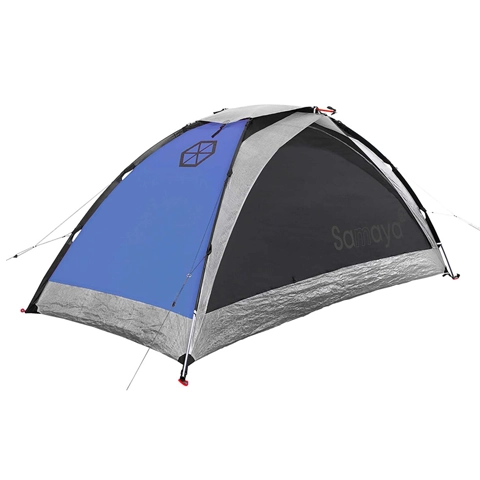
Key Specs
Weight: 2lb 15.2 ounces (1340 grams)
Material: laminated DCF
Price: $$$
PROS
✅ Easy to set up
✅ Features available materials
CONS
❌ Expensive
The Samaya 2.0 is designed for high-quality shelter during alpine expeditions. It accommodates 2 people comfortably and can be customized with additions like a footprint, vestibule and mosquito net.
As a 4-season tent, it ensures warm, dry shelter in all conditions. Setup and storage are straightforward, making it a superb companion for demanding trips.
Features like the Dyneema composite floor, Nanovent breathable walls and integrated pole sleeves deliver excellent protection, ventilation and durability. Quality craftsmanship is evident throughout.
Staked securely, the tent handled every environment I tested it in. However, the included stakes may not be ideal for very hard or rocky ground.
Where the Samaya 2.0 truly shines is its lightweight compactness.
Admittedly, the price is at a premium level. But for serious alpinists, the tent’s performance easily justifies the cost for dependable shelter in remote environments.
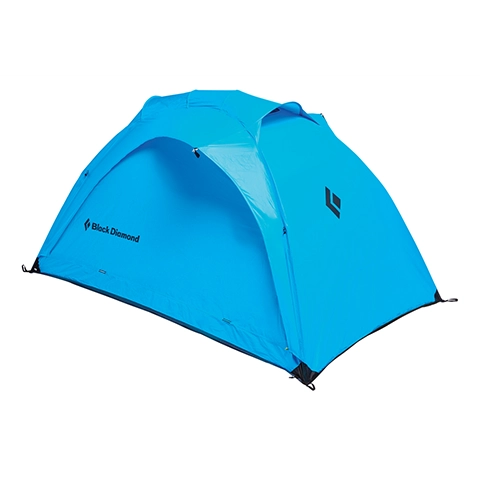
Key Specs
Weight: 3lb 15.1 ounces (1790 grams)
Material: 30D polyester
Price: $
PROS
✅ Durable
✅ Relatively affordable
CONS
❌ Minor condensation
❌ Relatively heavy
The enhanced HiLight 2P tent boasts a roomy and sturdy design well-suited for challenging conditions. Its high tenacity fabric guarantees durability, while fully taped seams eliminate seam sealing worries.
The spacious side entry door and optional vestibule provide accessibility and storage. Internal anchors allow steeper pitches.
While quite lightweight for backpacking, the single-wall construction can result in condensation buildup. Careful ventilation is key in damper environments.
Setup takes practice but allows pitching the rainfly first for protection. Reflective guylines and reinforced poles provide stability.
Overall it delivers bombproof 4-season shelter in a package optimized for alpine starts and technical terrain. Just be aware of potential condensation issues with the single-skin build.
When choosing a 4-season backpacking tent for harsh weather, there are a few critical factors to keep in mind:
Weight vs Durability
Tent Poles and Frame
Fabrics and Coatings
Weatherproof Flooring
Doors and Vestibules
Capacity
Additional Features
Prioritizing these key factors will help select the best 4-season tent for your backcountry needs and long-lasting protection from harsh elements.
If you’re not sure whether to choose a 4-season tent or go for a 3-season one, take a look at our post here.
When going hiking or camping in variable weather conditions throughout the year, a 4-season tent may not be completely necessary if most of your trips will be in early spring, summer or late fall. A 3-season tent designed to be waterproof, windproof and insulated could suffice for most outdoor adventures. However, for serious all-season backpacking or mountain expeditions where you need shelter from heavy snow, ice and high winds, a 4-season tent with fully taped seams, breathable yet sealed fabrics, upright structural integrity and ventilated condensation control provides the safest shelter. While heavier than a 3-season option, the full protection of a 4-season tent is worth considering for extended winter trips far from roads where unpredictable weather could otherwise cut short your outdoor excursion.
Look for a tent designed with strong yet lightweight aluminum alloy poles like Easton or DAC that can withstand high winds and heavy snowfall. The roof and walls should utilize durable, breathable fabric with a weather-resistant coating like silicone or PU to safeguard against prolonged rain, snow and condensation. Opt for a bathtub-style floor with a heavy-duty waterproof material extended high up the sides to sufficiently block moisture and insulation from wind and snow. Multiple doors and large vestibule spaces improve airflow and allow storage of gear outside the main living area. Consider interior capacity to comfortably accommodate additional campers or equipment if storms prolong stays. Fully taped seams, reinforced stitching, ample guy-out points and inclusion of stakes and guidelines provide a structure secure against unpredictable conditions far from roads. Choosing a tent with these critical features supplies long-lasting protection and insulation for challenging backcountry expeditions in any season or remote wilderness environment.
Here are some key things to consider when comparing the durability of different 4-season tents: Look at pole materials – aluminum is best for strength in heavy snow. Check fabric weights and coatings – heavier/thicker materials withstand weathering better. Compare floor designs – bathtub floors prevent snow/water ingress. Examine seam taping and stitching – fully taped seams are more durable. Consider reinforcement at corners/poles – this improves longevity. Also review weather testing and warranties – professional testing and longer warranties indicate greater durability. Comparing construction details like these can help you determine which tents will stand up best to punishing winter conditions over the long-term.
Condensation inside the tent can significantly impact performance in cold winter conditions. Tents with single-wall construction and lack of vapor barrier are more prone to interior wetness from breathable fabrics. This leads to reduced insulation as condensation forms on inner tent surfaces, making occupants uncomfortably wet and cold. Proper ventilation techniques like cracks in the vestibule and installed vents help drive moisture out. Look for dual-wall designs with breathable inner skin and waterproof outer, minimizing condensation buildup. Vapor-permeable inner fabrics paired with ventilated mesh promote air circulation while trapping body heat.